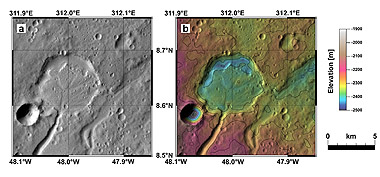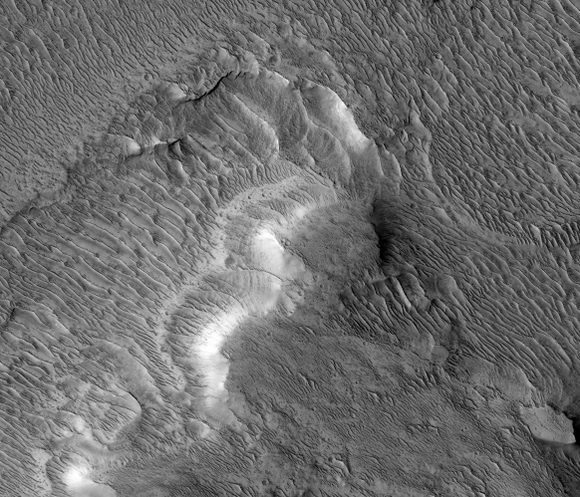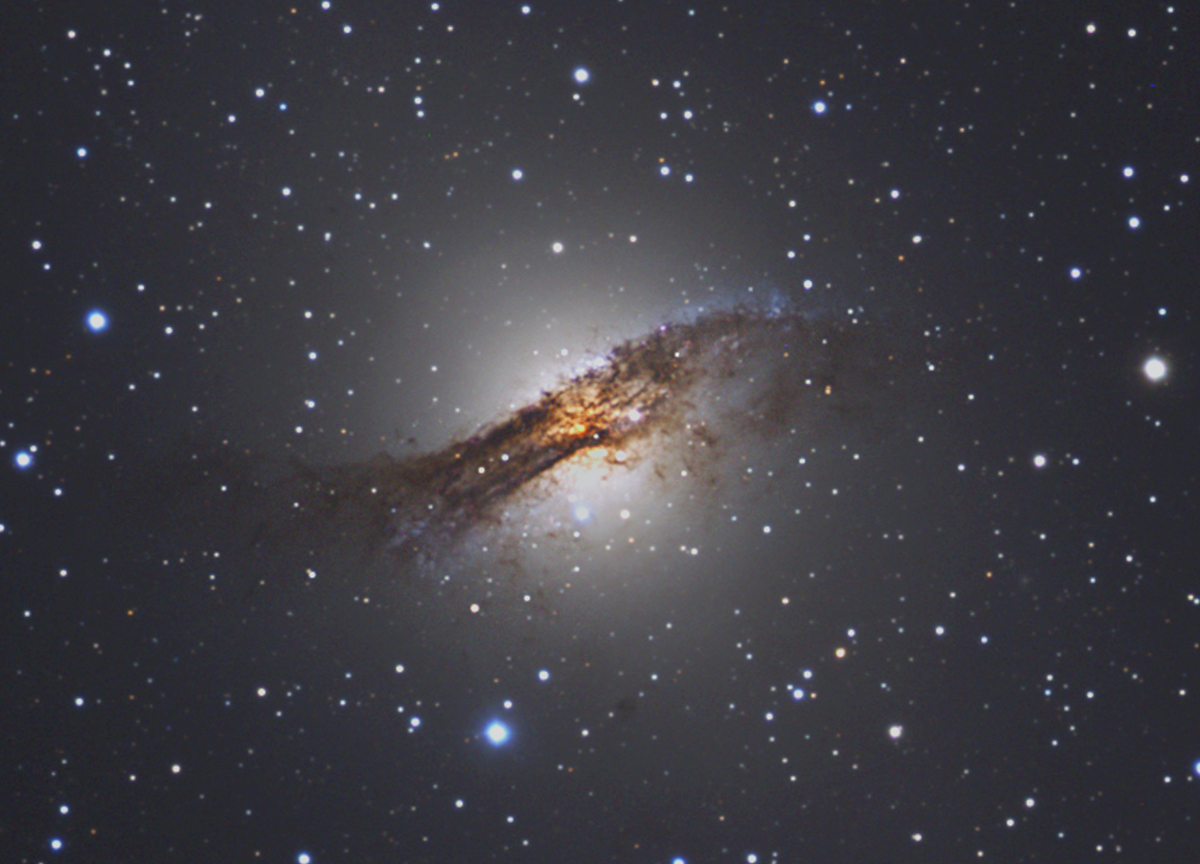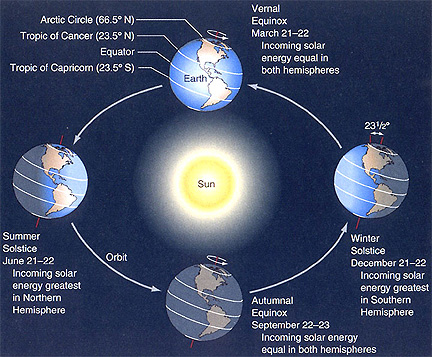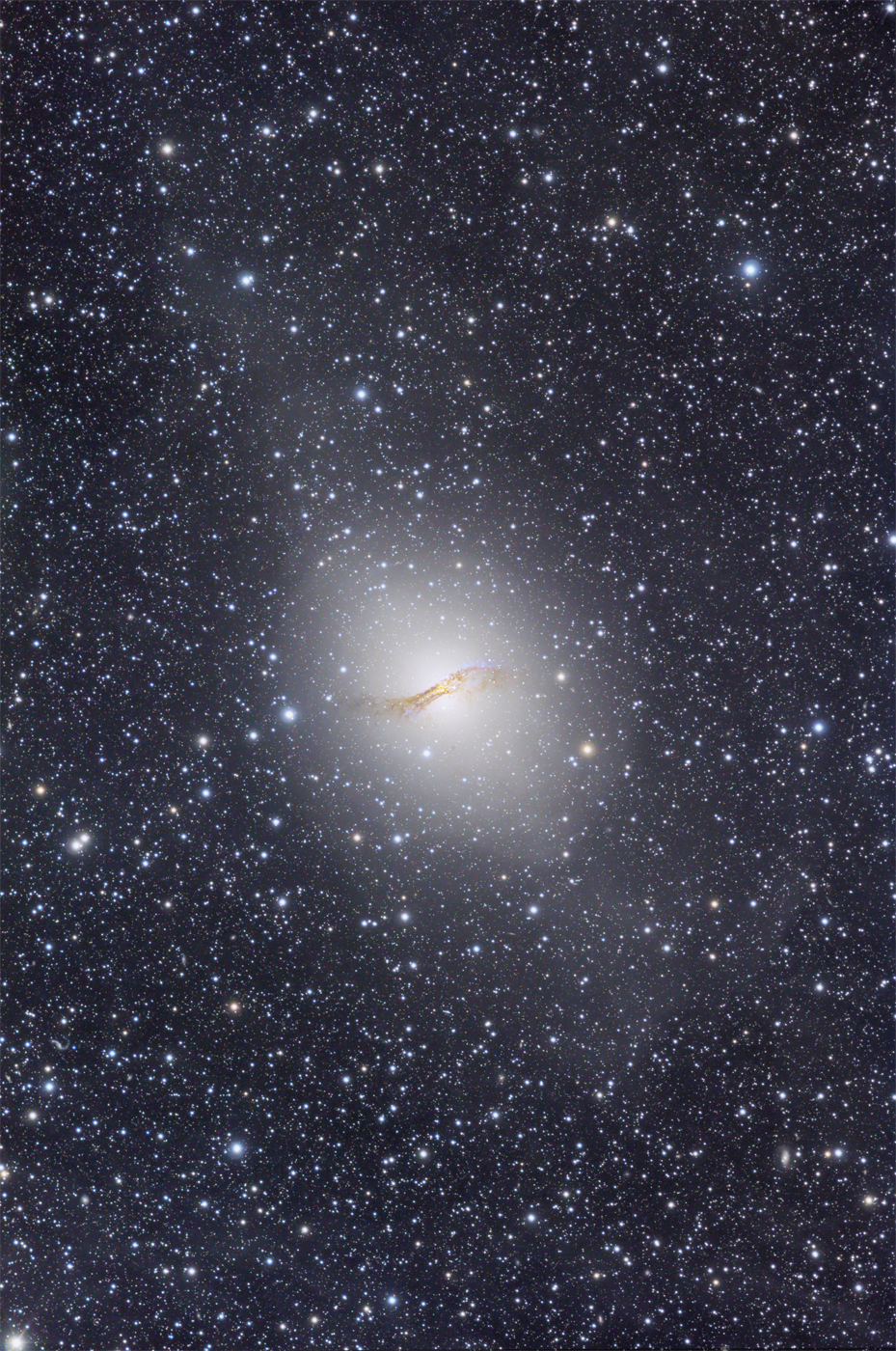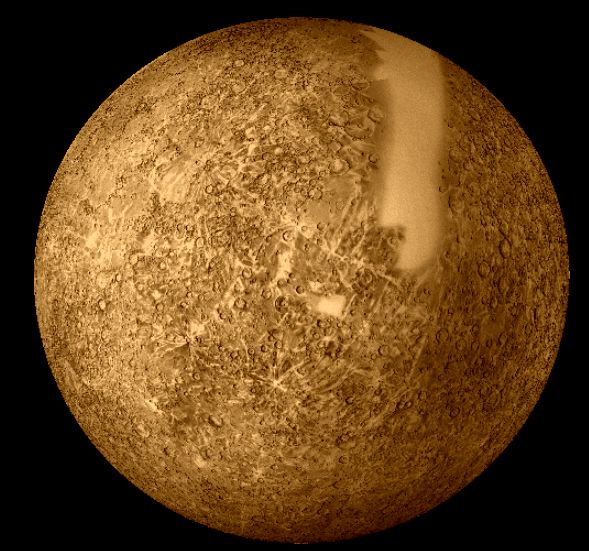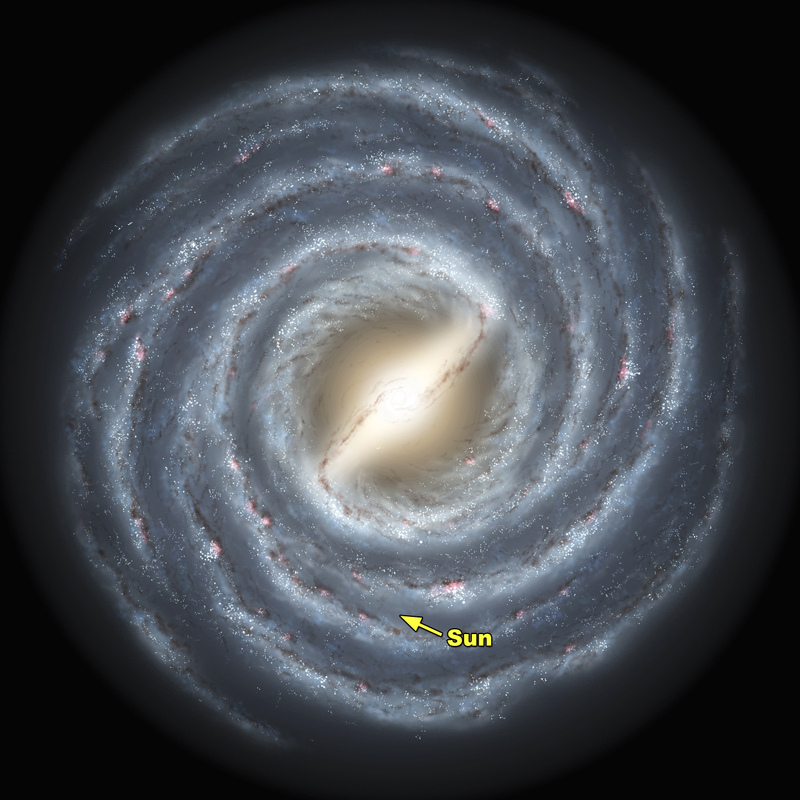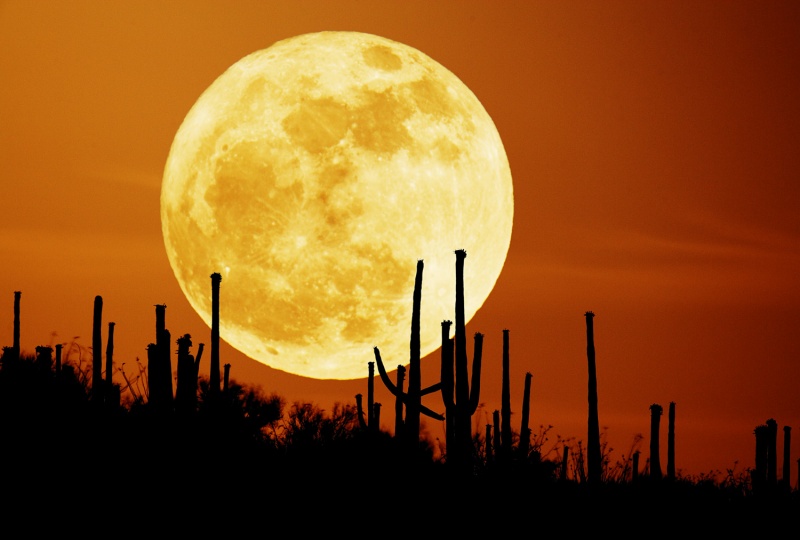Greetings, fellow SkyWatchers! Are you psyched up for tonight’s Pleiades occultation? I am! While the Moon often passes near the ancient cluster, it’s not often we get to enjoy such a great event so well placed at a comfortable time of the year. This weekend we’ll be watching for ISS passes, reaching for the “Ring”, visiting Andromeda, and taking on two new Herschel 400 studies. Time to get out your telescopes, spotting scopes and binoculars and head out into the night because…. Here’s what’s up!
Friday, September 19, 2008 – On this day in 1848, William Boyd was watching Saturn – and discovered its moon Hyperion. Also today in 1988, Israel launched its first satellite. And don’t forget…t his evening will feature possibly the best occultation of the Pleiades by the Moon this year, so be sure to check with IOTA for details!
How long has it been since you’ve watched the ISS pass overhead, or seen an Iridium flare? Both are terrific events that don’t require any special equipment to be seen – even in the daytime! Be sure to check with www.heavens-above.com for accurate times in your location – and enjoy. While you’re out SkyWatching, be sure to have a look for Spica on the southwestern horizon after sunset. You just might discover a few planets joining the show!
When skies are dark, it’s time for us to head directly between the two southernmost stars in the constellation of Lyra and grab the “Ring.” What summer would be complete without it?
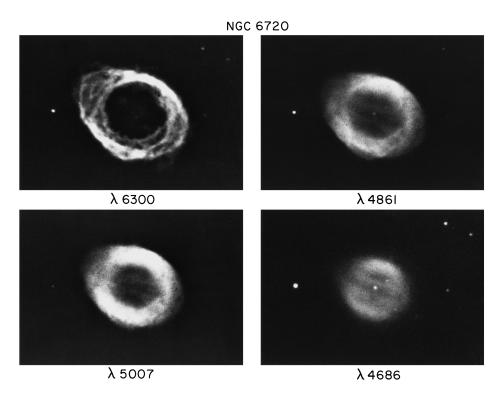 Discovered by French astronomer Antoine Darquier in 1779, the Ring Nebula was cataloged later that year by Charles Messier as M57 (RA 18 53 35 Dec +33 01 45). In binoculars the Ring will appear as slightly larger than a star, yet it cannot be focused to a sharp point. To a modest telescope at even low power, M57 turns into a glowing donut against a wonderful stellar backdrop. The accepted distance to this unusual structure is about 1,400 light-years, and how you see the Ring on any given night is highly dependent on conditions. As aperture and power increase, so do details, and it is not impossible to see braiding in the nebula’s structure with scopes as small as 8″ on a fine night, or to pick up the star caught on the edge in even smaller apertures.
Discovered by French astronomer Antoine Darquier in 1779, the Ring Nebula was cataloged later that year by Charles Messier as M57 (RA 18 53 35 Dec +33 01 45). In binoculars the Ring will appear as slightly larger than a star, yet it cannot be focused to a sharp point. To a modest telescope at even low power, M57 turns into a glowing donut against a wonderful stellar backdrop. The accepted distance to this unusual structure is about 1,400 light-years, and how you see the Ring on any given night is highly dependent on conditions. As aperture and power increase, so do details, and it is not impossible to see braiding in the nebula’s structure with scopes as small as 8″ on a fine night, or to pick up the star caught on the edge in even smaller apertures.
Like all planetary nebulae, seeing the central star is considered the ultimate achievement in viewing. The central itself is a peculiar bluish dwarf which gives off a continuous spectrum, and might very well be a variable. At times, this shy, near 15th magnitude star can be seen with ease with a 12.5″ telescope, yet be elusive to even 31″ in aperture weeks later. No matter what details you may see, reach for the “Ring” tonight. You’ll be glad you did.
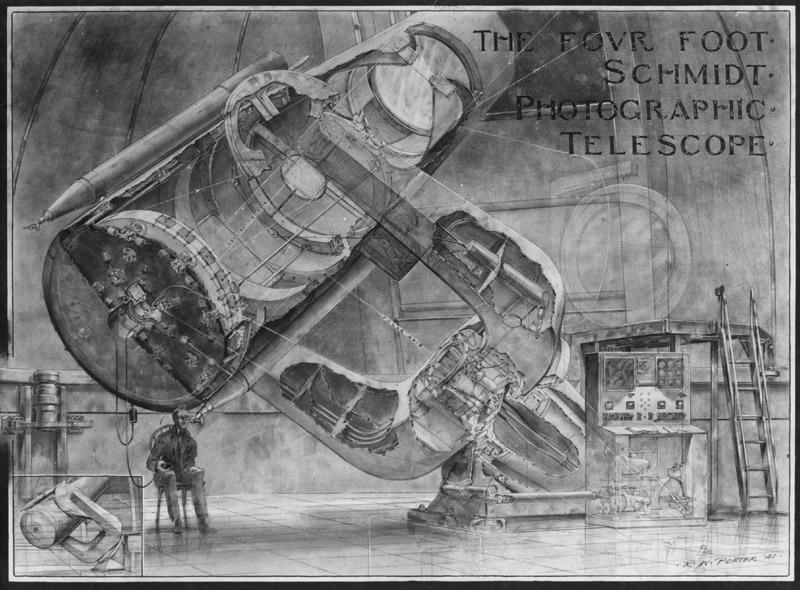 Saturday, September 20, 2008 – On this night in 1948, the 48″ Schmidt telescope at Mt. Palomar was busy taking pictures. Its very first photographic plate was being exposed by the same man who ground and polished the corrector plate for this scope – Don Hendricks. His object of choice was reproduced as panel 18 in the Hubble Atlas of Galaxies, and tonight we’ll join his vision as we take a look at the fantastic M31, the Andromeda Galaxy.
Saturday, September 20, 2008 – On this night in 1948, the 48″ Schmidt telescope at Mt. Palomar was busy taking pictures. Its very first photographic plate was being exposed by the same man who ground and polished the corrector plate for this scope – Don Hendricks. His object of choice was reproduced as panel 18 in the Hubble Atlas of Galaxies, and tonight we’ll join his vision as we take a look at the fantastic M31, the Andromeda Galaxy.
Seasoned amateur astronomers can literally point to the sky and show you the location of M31, but perhaps you have never tried to find it. Believe it or not, this is an easy galaxy to spot even under the moonlight. Simply identify the large diamond-shaped pattern of stars that is the Great Square of Pegasus. The northernmost star is Alpha, and it is here we will begin our hop. Stay with the northern chain of stars and look four fingerwidths away from Alpha for an easily seen star. The next along the chain is about three more fingerwidths away… And we’re almost there. Two more fingerwidths to the north and you will see a dimmer star that looks like it has something smudgy nearby. Point your binoculars there, because that’s no cloud – it’s the Andromeda Galaxy!
 Now aim your binoculars or small telescope its way… Perhaps one of the most outstanding of all galaxies to the novice observer, M31 spans so much sky that it takes up several fields of view in a larger telescope, and even contains its own clusters and nebulae with New General Catalog designations. If you have a slightly larger telescope, you may also be able to pick up M31’s two companions – M32 and M110. Even with no scope or binoculars, it’s pretty amazing that we can see something – anything! – that is over two million light-years away!
Now aim your binoculars or small telescope its way… Perhaps one of the most outstanding of all galaxies to the novice observer, M31 spans so much sky that it takes up several fields of view in a larger telescope, and even contains its own clusters and nebulae with New General Catalog designations. If you have a slightly larger telescope, you may also be able to pick up M31’s two companions – M32 and M110. Even with no scope or binoculars, it’s pretty amazing that we can see something – anything! – that is over two million light-years away!
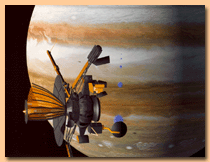 Sunday, September 21, 2008 – On this date in 2003, the Galileo spacecraft bravely entered the atmosphere of Jupiter as it completed its final mission. Launched in 1989 and orbiting the giant planet since 1995, the hugely successful Galileo taught us much about Jupiter’s lethal radiation belts, magnetic field, atmosphere, and moons – but it had one last command to execute: self-destruction. Although it was still performing flawlessly (despite its lack of fuel and with its instrumentation badly scarred by radiation), scientists feared it might contaminate other possible life-sustaining moons such as Europa, and the decision was made to aim it into Jupiter’s certain oblivion. We salute its final moments!
Sunday, September 21, 2008 – On this date in 2003, the Galileo spacecraft bravely entered the atmosphere of Jupiter as it completed its final mission. Launched in 1989 and orbiting the giant planet since 1995, the hugely successful Galileo taught us much about Jupiter’s lethal radiation belts, magnetic field, atmosphere, and moons – but it had one last command to execute: self-destruction. Although it was still performing flawlessly (despite its lack of fuel and with its instrumentation badly scarred by radiation), scientists feared it might contaminate other possible life-sustaining moons such as Europa, and the decision was made to aim it into Jupiter’s certain oblivion. We salute its final moments!
And what was Sir William Herschel doing on this date a couple of centuries ago? You can bet he was out telescoping; and his discoveries on this night were many. How about if we take a look at two logged on September 21 which made the Herschel “400” list?
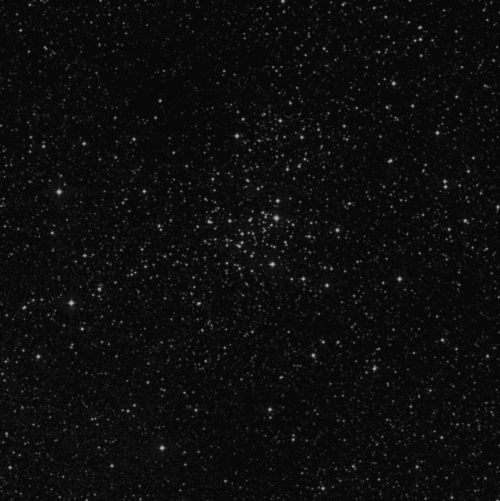 Our first stop is northern Cygnus for NGC 7086 (RA 21 30 30 Dec +51 35 00). Located on the galactic equator about five degrees west of Beta Cephei, our target is an open cluster. At magnitude 8.4, this loose collection will be difficult for the smaller scope, and show as not much more than an arrow-like asterism. However, larger scopes will be able to resolve many more stars, arrayed in long loops and chains around the brighter members. Although it’s sparse, NGC 7086 has been studied for metal abundance, galactic distance, membership richness, and its luminosity function. Be sure to mark your notes for H VI.32, logged by Herschel in 1788.
Our first stop is northern Cygnus for NGC 7086 (RA 21 30 30 Dec +51 35 00). Located on the galactic equator about five degrees west of Beta Cephei, our target is an open cluster. At magnitude 8.4, this loose collection will be difficult for the smaller scope, and show as not much more than an arrow-like asterism. However, larger scopes will be able to resolve many more stars, arrayed in long loops and chains around the brighter members. Although it’s sparse, NGC 7086 has been studied for metal abundance, galactic distance, membership richness, and its luminosity function. Be sure to mark your notes for H VI.32, logged by Herschel in 1788.
 Now hop on over to Andromeda for NGC 752 (RA 01 57 41 Dec +37 47 06). You’ll find it just a few degrees south of Gamma and in the field north of star 56. Located 1300 light-years away, there’s a strong possibility this cluster was noted first by Hodierna before being cataloged by Herschel on this night (1786). At near magnitude 5, this “400” object is both large and bright enough to be seen in binoculars or small telescopes, and people have often wondered why Messier did not discover it. The star-studded field containing about 70 members of various magnitudes belong to H VII.32 – a very old cluster which has more recently been studied for its metallicity and the variations in the magnetic fields of its members. Enjoy them both tonight! Sir William did…
Now hop on over to Andromeda for NGC 752 (RA 01 57 41 Dec +37 47 06). You’ll find it just a few degrees south of Gamma and in the field north of star 56. Located 1300 light-years away, there’s a strong possibility this cluster was noted first by Hodierna before being cataloged by Herschel on this night (1786). At near magnitude 5, this “400” object is both large and bright enough to be seen in binoculars or small telescopes, and people have often wondered why Messier did not discover it. The star-studded field containing about 70 members of various magnitudes belong to H VII.32 – a very old cluster which has more recently been studied for its metallicity and the variations in the magnetic fields of its members. Enjoy them both tonight! Sir William did…
Until next week, I will you clear skies and happy hunting!
This week’s awesome images are: M57 “Ring Nebula” – Credit: NOAO/AURA/NSF, 48″ Schmidt Scope (Drawing by Russell Porter) – Credit: Palomar Observatory courtesy of Caltech, The Andromeda Galaxy – Credit: Anonymous, Artist’s concept of Galileo – Credit: NASA, NGC 7086 – Credit: Palomar Observatory, courtesy of Caltech and NGC 752 – Credit: Palomar Observatory, courtesy of Caltech. Our many thanks!
